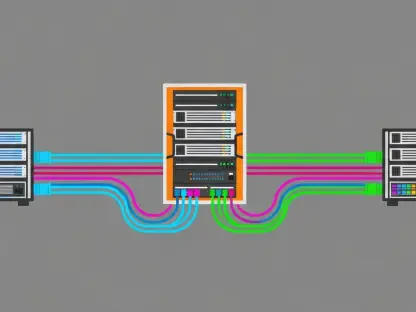As state and local governments adjust to the ramifications of the 2025 fiscal year, they’ll need to balance budgetary concerns with the ability to deliver exceptional citizen services. The ability to do both depends on agencies creating new solutions and augmenting existing ones using actionable intelligence derived from various disparate data sources. The ever-increasing volume of data provides an opportunity for agencies to make more informed decisions, leading to significant improvements in the quality and personalization of services offered to the public.
Agencies have the chance to leverage data to drive enhancements in areas ranging from healthcare to transportation and environmental management. However, the influx of information brings challenges, such as ensuring the data is of high quality, maintaining budget constraints, and providing services that meet citizens’ needs. To tackle these challenges, it is essential to focus on fostering interagency collaboration, establishing robust data governance standards, and investing in high-quality data collection tools and infrastructure. These steps will help agencies optimize their data collection and analysis processes to deliver more effective and efficient citizen services.
Encourage Interagency Collaboration with a Practice Community
When discussing data collection, it is essential to look beyond intelligent cameras, sensors, and other devices that make a city smart and the physical data they ingest. It’s equally vital to consider the information collected by different agencies, including local law enforcement, healthcare, and other organizations. Importing this information into a usable data repository, such as a data lake, is critical to building a comprehensive view of citizens’ services and devising ways to improve their experiences. Traditionally, agencies have created siloed data sets and have been reluctant to share their information with other organizations — understandably so, thanks to security and privacy concerns.
However, moving away from this mindset and sharing information among agencies in an approved and compliant manner can benefit the organization and its citizens. Consider, for example, what might happen if the local health department could share data on opioid deaths with local law enforcement. They could work together to target hard-hit areas and perhaps stem the tide of addiction.
Fostering agency collaboration by creating a community of practice involves bringing key stakeholders together to discuss data collection and analysis best practices. There, leaders can discuss what data to share, how to share it, and the tools and processes that must be in place to ensure that collaboration is seamless and secure. They can share their data and how it was collected, providing transparency and giving other agencies ideas on improving their processes.
Create Data Governance Guidelines
Establishing strong data governance standards must be a core focus of stakeholder discussions. Privacy and data protection, collection, and sharing policies should be based on the group’s feedback and consider each agency’s unique requirements. Good data governance should also consider policies for data standardization, which ensures consistency in how information is collected, analyzed, and used. Agencies should establish consistent data formats and terminologies that can easily be shared and understood across different departments. Consistency can make cross-data aggregation and sharing easier.
Effective data governance helps mitigate risks associated with data breaches and ensures compliance with legal and regulatory requirements. It also creates a framework for data quality management, helping agencies ensure that the data they collect and use is accurate, complete, and reliable. This can lead to significant cost savings by reducing the need for data cleaning and reprocessing. Additionally, by having well-defined governance policies, agencies can increase the trust and confidence of the public in how their data is handled and used, fostering better citizen engagement and cooperation.
Adopting a collaborative approach to establishing data governance guidelines encourages input from all relevant stakeholders, ensuring the standards reflect the diverse needs and perspectives of different agencies. By doing so, agencies can create a more unified and cohesive data management strategy that facilitates seamless data sharing and collaboration while maintaining high standards of privacy and security.
Invest in Top-Quality Data Collection Tools and Infrastructure
Establishing sound data governance standards is essential before investing in the tools and infrastructure that support data collection, analysis, and sharing. Too often, agencies take the opposite approach of purchasing technology before gathering ideas and creating a plan, only to revisit their technology decisions when they discover their tools need to align with their objectives. However, the tools agencies invest in should be directly dictated by the data governance requirements and the other needs of the community of practice.
Agencies can then consider the best solutions and infrastructure to optimize data collection, sharing, and analysis. The type of solutions agencies opt for will depend on the type of data they’re capturing, how much data they’re collecting, and how quickly they need access to that data. For example, traffic flow optimization may require nearly real-time data collection and analysis, necessitating a flexible infrastructure that supports data capture and processing at the edge for rapid decision-making. Conversely, healthcare data requiring deeper analysis may need an infrastructure that allows data analytics across different on-premises or cloud environments.
To ensure agencies can effectively manage and analyze the large volumes of data they collect, it’s important to invest in advanced analytics tools that can handle big data. These tools should be capable of processing and analyzing data from various sources in real-time, providing actionable insights that can drive decision-making. Additionally, investing in scalable and flexible infrastructure, such as cloud-based solutions, allows agencies to efficiently manage their data storage and processing needs as they grow.
Strong Data Governance Paves the Way for Effective Services
As state and local governments adapt to the fiscal year 2025, they must balance budget concerns with the need to provide excellent citizen services. Achieving this balance hinges on agencies developing and improving solutions using actionable intelligence derived from diverse data sources. The growing volume of data offers an opportunity to make more informed decisions, enhancing the quality and personalization of services for the public.
Agencies can use data to drive improvements in healthcare, transportation, environmental management, and more. However, the influx of data presents challenges, such as ensuring data quality, adhering to budget constraints, and meeting citizens’ needs. Addressing these challenges requires focusing on interagency collaboration, setting up robust data governance standards, and investing in top-notch data collection tools and infrastructure. These measures will help agencies enhance their data collection and analysis, resulting in more effective and efficient citizen services. Embracing these strategies ensures that governments are well-prepared to meet the evolving needs of their communities.









